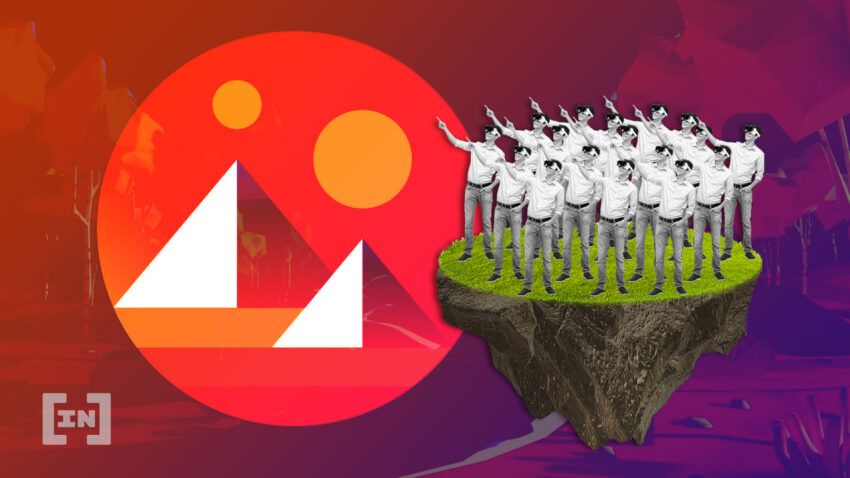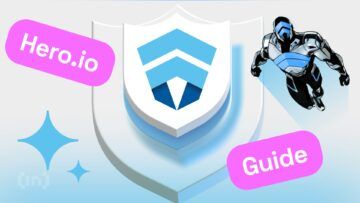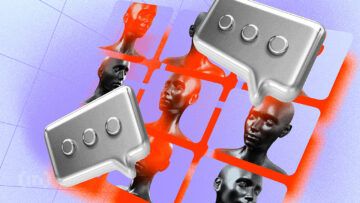What is decentraland (MANA)? If you are looking to buy NTFs with utility or simply planning to learn more about peer-to-peer connections, you might have heard about Decentraland already. But there is a bigger question here: what is Decentraland in its entirety? And what does it, as a platform, stand for?
Firstly, it is a virtual reality platform on top of Ethereum. A layman would simply term it a metaverse but it is a lot more than that. So the next time some asks you the question: what is Decentraland, introduce it as a virtual world that allows you to purchase chunks of land, build virtual infra, and even monetize these gigs in the process. Don’t sweat over these terms, we will explain them later!
The experience associated with this platform is as wholesome as it gets. Yet, there is a lot more to a discussion regarding Decentraland. So get ready to dig deep into land estates, digital assets, and the metaverse.
In this guide:
- Metaverse, an emerging DeFi space
- The evolution of the metaverse
- First things first: What is Decentraland?
- How does Decentraland work?
- What is the Decentraland DAO?
- Decentraland’s competitors: It’s primarily Sandbox vs Decentraland
- Decentraland’s roadmap and development history
- What are LAND and Estate tokens- important part of the Decentraland definition
- What is Decentraland coin MANA?
- How to buy MANA?
- How to stake MANA
- Is Decentraland the future of metaverse?
- Frequently asked questions
Metaverse, an emerging DeFi space
‘What is Decentraland?’ is a question you cannot answer without discussing the metaverse.
The metaverse is no longer just a setting for sci-fi movies. It is a virtual world that humans can interact with just as easily as in the real world. Being part of the metaverse is more than just playing games and chatting with avatars. This virtual space includes buying assets, traveling, event hosting, and intertwining with different industries.
To enter the metaverse, your mind must be open to the infinite possibilities of social interactions. It is dynamically changing and all-encompassing, all-engulfing, and transforming everything in its path. Yet, there is a catch. Which metaverse is the right fit with the likes of Sandbox, Axie Infinity, and obviously the Decentraland metaverse — fighting it out? We will get to that, in time.
This ultimate virtual 3D environment spans across both private and shared digital experiences. Zoomers, in particular, travel from one place or another to perform their activities. They navigate the metaverse to interact with, collaborate, and immerse themselves in the virtual world. This is a generation of people who value digital art and would gladly look past physical art to prove their point.
Some metaverse use-cases
Over time, people will be able to switch seamlessly between the metaverse and the physical world with ease. Currencies are already in use to facilitate virtual interactions. Some of these virtual spaces have already become an important hub for virtual events. Moreover, users can purchase virtual avatars and land. Artists are already performing in the metaverse and getting cryptocurrency in return. They can then exchange their earnings for goods that they need to live in the real world. The metaverse’s expansion will increase the value and possibly lead to a rapid expansion of global economic activity.
We already have a prototype of the metaverse, with digital goods such as non-fungible tokens (NFTs), which can represent popular art and digital memorabilia. Investors and crypto enthusiasts alike are already embracing it. And that explains why you are reading through this post about the Decentraland Metaverse, at this hour.
The evolution of the metaverse
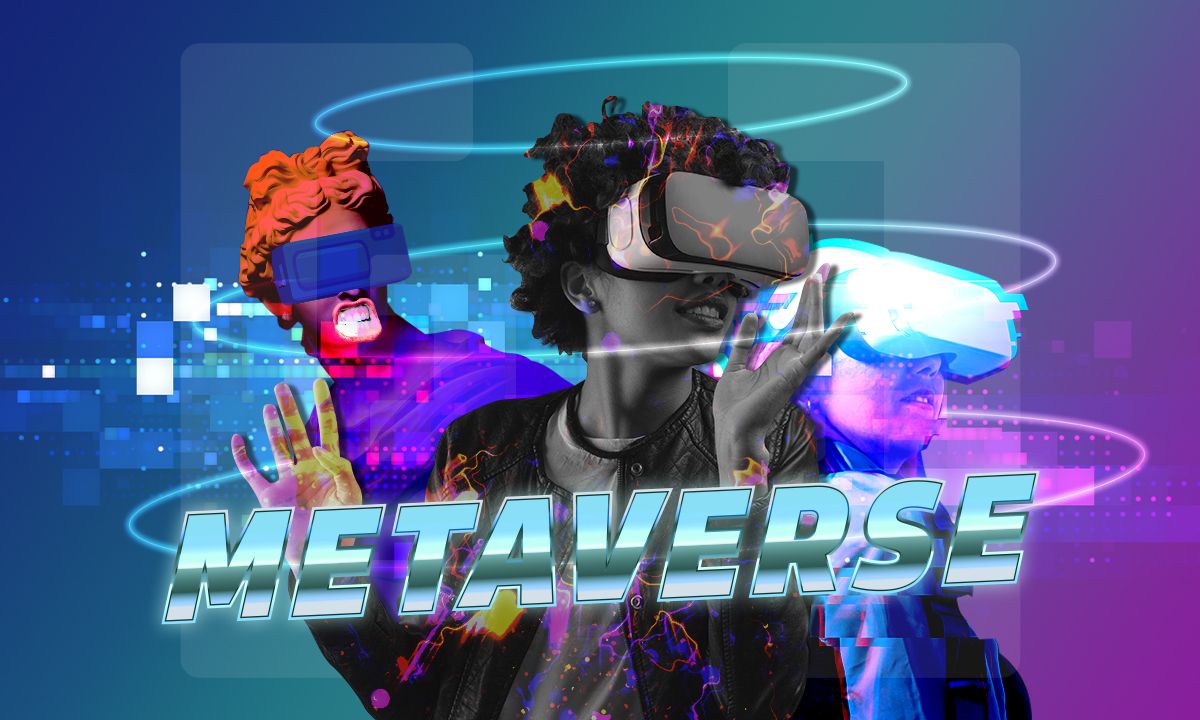
In 1932, the term virtual reality was used for the first time by Antonin Artaud, a French dramatist. In 1945, an American engineer proposed — As we may think — a primitive concept for file storing. The device, called Memex, would allow users to store and manage documents and media, including books, by compressing them. The device would keep these documents in a mechanized filing cabinet.
Metaverse origins
The term metaverse was used for the first time by Neal Stephenson in his 1992 sci-fi novel Snow Crash. The book’s plot would guide many of Silicon Valley’s most prominent founders over the next decade. They used the novel’s vision of a virtual world intertwined with the real one to chart the future.
Then, in perhaps the most telling depiction, Ernest Cline published Ready Player One novel in 2011, set in a dystopian future, where humanity escapes earthly chaos by using OASIS, a virtual reality that doubles as a parallel civilization.
Video games have greatly exploited the idea of a metaverse. RuneScape and Second Life were the pioneers of this genre. There was a wave of other games that followed, such as Roblox, Fortnite, Animal Crossing: New Horizons, and Minecraft, which are all hugely popular.
These are the historical tenets that show that the metaverse concept is rapidly gaining ground in mainstream culture. This idea, which was once a sci-fi creation, seems more plausible and likely to change the way we shop and socialize as well as how we learn, work, and play.
Enough about the metaverse! Now lets discuss what is decentraland and what is decentraland used for?
First things first: What is Decentraland?
Decentraland is a virtual reality platform with blockchain technology at its core. But we already talked about that, didn’t we. Here is the fun part then.
The platform allows users to create, experience, and monetize content or applications.
It lets people own their digital assets, which is a major improvement compared to traditional online spaces like Facebook and Twitter or traditional video games. In Decentraland, you can interact with other users and enjoy social VR experiences. The project uses blockchain technology to power everything, from purchasing land to any kind of transaction on the platform.
What blockchain is Decentraland on?
MANA is Decentraland’s native token or rather the official currency. And didn’t we mention that the Decentraland metaverse is built atop Ethereum.
Now if someone asks you what blockchain is decentraland on, you should have the answer! It is Ethereum.
Well, that explains that MANA is an ERC-20 token. We often use MANA and Decentraland interchangeably and hence, from now, we will address them together as Decentraland (MANA). Well, in some places!
More about Decentraland
Decentraland’s goal is to provide an open-source platform for users to create whatever they wish within this virtual space. Land parcels are, in fact, digital assets, commonly referred to as NFTs.
You can do whatever you like with the LAND, once acquire it. This includes virtual stores, online casinos, social media platforms, or other virtual spaces. You can also create LAND-based services for professional development, education, and tourism.
The LAND in the Decentraland
Each plot of LAND measures 16 meters x 16 meters. Decentraland even has land Estates. This feature allows you to manage your LAND more efficiently by merging adjacent parcels. You can check the LAND marketplace if you are interested in buying LAND, or you can simply check the map. Do note that every specific coordinates define every piece of LAND in the Decentraland metaverse.
Districts are similar groups on LAND. These are communities with a common theme. One example is a district that’s just for crypto enthusiasts. It may include services and apps related to cryptocurrency.
Decentraland’s voting app, Agora, allows you to vote on district issues. Your vote weight is determined by how many LAND NFTs you have in a particular district. Do note that one piece of LAND is equal to 2,000 votes.
Agora was created by Decentraland to give you greater control over the events in your districts and allow you to provide feedback to the platform.
How does Decentraland work?
To allow users to engage with the software, Decentraland uses the Ethereum blockchain and its smart contracts to track who owns digital land or performs other transactions using MANA. The users must hold their MANA token in an Ethereum wallet. Users can enter Decentraland by connecting their Ethereum wallet. The platform also allows users to enter Decentraland as guests without needing a wallet.
Decentraland (MANA) consists of three main layers: the consensus, content, and real-time layers.
The consensus layer keeps a ledger of the land parcels owned. Each parcel of LAND is assigned a unique coordinate in a virtual world, an owner, and a reference file that describes the contents within the parcel.
The content layer is responsible for what happens in each parcel and contains various files that are required to render them.
- Content files – refers to all static audio and visuals
- Script files – This is where you can define the behavior and placement of the referenced content
- Interaction Definition – Peer-to-peer interactions like gesturing, messaging, and voice chat.
The real-time layer allows for social interaction within Decentraland (MANA) via user avatars and voice chat, as well as messaging. The real-time layer even lets you deploy the fun aspects of the Decentraland Game. However, more than Decentraland game itself, Decentraland is slowly taking center-stage as an NFT marketplace, thanks to the LAND, Estate, and District-like traits.
Decentraland’s token structure: What is Decentraland coin (s)
In Decentraland, three types of tokens form a kind of real estate market: MANA (the money), WEAR (wearables), and LAND or “land” (the parcels on top of which applications can be built).
MANA is the currency of Decentraland. With it, you can buy or rent parcels of virtual land, known as LAND. The LAND tokens are ERC-721 tokens. For now, Decentraland is only based on the ERC-721 standard, unlike its competitor, The Sandbox, which uses both this type of token and ERC-1155. Hence, if you are looking for something to diffuse the Sandbox vs Decentraland debate, do note a few points here:
- Decentraland is deep into the virtual world infra while Sandbox is an out-and out decentralized game, which still offers LAND picks to the users.
- Decentraland (MANA) only supports NFT creation but Sandbox with ERC-1155 standard in place, also lets the user create semi-fungible and fungible tokens from other tokens and currencies.
What is decentraland used for?
The Decentraland team also released a marketplace and a drag-and-drop editor that users can use to create scenes.
Participants can trade and manage LAND tokens using the native coin, MANA. The marketplace allows owners to transact, transfer, and exchange parcels as well as other in-game items like unique art and wearables.
Decentraland’s builder tools allow owners to create unique experiences within their LAND parcels. Its editing tool allows developers to create interactive scenes. Developers can also access customization libraries or payment implementations.
What is the Decentraland DAO?
Unlike other virtual spaces, Decentraland is not governed by a central entity. There is no company behind it to dictate what should happen within its digital space. Simply put, if you have the right Decentraland Coin, you become a decision maker.
Let’s delve deeper into this:
Decentraland is governed by those who own MANA tokens and real estate holders, LAND investors. This governance system is called the Decentraland DAO (decentralized autonomous organization). As you can see, the Decentraland definition keeps growing. Virtual world, NFTs, a gaming platform, and now even a DAO.
How voting happens in Decentraland
Each change and upgrade within the protocol is voted by the users using their MANA and LAND. For instance, each MANA has one unit of vote power, while a parcel of LAND or Estate tokens offers 2000 units each.
During the voting process, you must wrap your MANA, which is the process of locking it in the DAO. Wrapping your MANA means that you cannot spend it or transfer it. You must first unwrap your MANA to be able to spend it or transfer it. You must register LAND or Estate tokens to vote.
Also, you can buy MANA on cryptocurrency exchanges such as Coinbase and Binance. LAND is exclusively available in the Decentraland marketplace. You can create ESTATE tokens by merging LAND NFTs.
Decentraland also has a Security Advisory Board (SAB). This board reviews governance proposals and handles bug reports. The five members of the SAB are elected by the Decentraland community and have the power to reject or delay governance proposals if they might have a negative effect on the protocol.
Decentraland’s competitors: It’s primarily Sandbox vs Decentraland
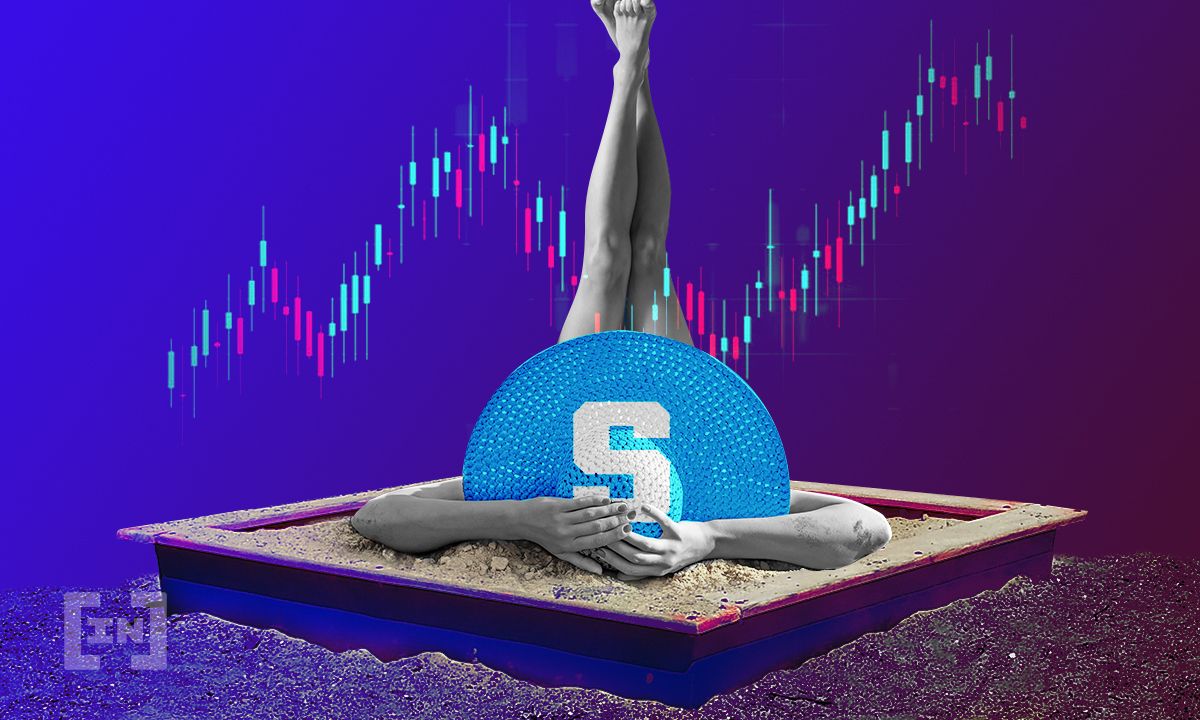
While there are many NFT marketplaces and services already, there aren’t that many virtual spaces that support the interoperability of DeFi applications. Decentraland’s main competitor is Sandbox, which is also based on the Ethereum blockchain. Therefore, if you plan on exploring the Decentraland meaning in its entirety, you should look at it against the competitors first.
Both platforms represent alternative realities that mirror real-life activities (like buying land or getting a job), but they also expand their power beyond what is possible in the real world. The in-game assets are NFTs, and each of these metaverses has them.
Sandbox vs Decentraland: the specifics
The Sandbox has 166,464 plots of LAND. These can be combined into estates (owned only by one person) and districts (owned jointly by two or more people). The Sandbox marketplace allows you to customize and monetize your land. You can play-to-earn, rent, or trade assets.
Decentraland contains 90,601 parcels of LAND. You can buy them in the Decentraland market with its native token MANA. They can be divided into individual parcels, estates (multiple pieces), districts (parcels that have similar themes), and plazas. You can modify parcels to monetize them for rent or play-to-earn.
The parcels and lands of both of these metaverses can be purchased on the OpenSea marketplace and are listed for sale in ETH or the native token of the metaverse (SAND or MANA).
Both Decentraland and The Sandbox can be equally successful
The Sandbox creators have been present in the gaming industry for many years. They have created numerous games for PC and mobile and work with many teams around the globe. The Decentraland founders only serve as advisors and have both resigned. One of the co-founders left to launch his own crypto game, called Big Time.
The Sandbox is a partner with Skybound Entertainment, Big Fan (esports initiative), Ubisoft. They even partnered with Snoop Dogg. The project has raised $93 Million in a Series B round led by SoftBank Vision Fund 2, a Japanese investment fund.
How the future looks for these metaverses
Decentraland is backed by over 20 investors, including Digital Currency Group and CoinFund, Animoca Brands. It also partnered with Polygon, Samsung, and the South Korean Government. Grayscale also created a Decentraland trust, which has more than 20 million MANA tokens locked and $8.8 million worth of assets under its management.
As of 2022, the Sandbox metaverse is in its alpha stage. The alpha launch took place on Nov. 29, 2021. It aims to bring the virtual world to mobile devices. By 2023, The Sandbox Foundations aims to have 5,000 games online. It wants to create in-game job opportunities where people can work just like they would in the outside world.
Decentraland, on the other hand, is more community-driven. The Decentraland roadmap is a Trello board.
Decentraland has also partnered recently with Sotheby, one of the largest auction houses in the world. The platform wants to offer in-game NFT galleries to allow collectors and investors to buy and sell digital art. They want to attract brands, creators, and celebrities to the space and to allow advertisements for new NFT and NFT airdrops. The community also wants to integrate Decentraland with other metaverses, to form an ever-increasing system-to-system metaverse.
And that settles the Sandbox vs Decentraland debate for now. Simply put, both these virtual platforms have the it in them to become successful, concurrently.
Decentraland’s roadmap and development history
Decentraland was built as a decentralized platform that focuses on the ownership and management of digital land parcels that users can use to create unique environments in virtual worlds. Creators of content can prove their ownership and gain value from the platform. A decentralized platform reduces the risk of censorship vulnerabilities due to infrastructure failures, security breaches, and other risks.
Decentraland was founded by Ari Meilich and Esteban Ordano in 2015. In 2017, the platform launched its parcels NFTs, which were each sold for about $20, while MANA tokens were worth around $0.02. Genesis City is the first map of Decentraland, and it consists of 90,601 land parcels.
In 2017, Decentraland raised $26 million during its Initial Coin Offering (ICO).
The project didn’t have a roadmap for a long while, but the DAO finally delegated the task, and the Decentraland roadmap took shape as a Trello board. It has four main sections (live, soon, next, and later), which are meant to communicate the plans for the platform. The community can easily understand what the development team is currently working on and what are the future plans for the project.
Some of the upcoming developments and features include In-world projects, better tools for SDK debugging, Avatar locomotion enhancements, linked wearables, and more.
What are LAND and Estate tokens- important part of the Decentraland definition
LAND and estate tokens are two NFTs of the platform. Both are ERC-721 tokens. Estate tokens are used to merge digital land tokens, and LAND is an NFT representing the digital parcel of land. You can purchase purchase both using MANA, the currency used in Decentraland.
So now it is a bit clearer what is decentraland used for? But there is more:
You can even use these NFTs to create in-world unique land parcels. Users can build applications and environments on the LAND tokens, such as games or communities, and they can also monetize them. You can create Estate tokens when you merge LAND tokens that are next to each other.
Some of the biggest tech and NFT-related companies have already established an estate in Decentraland, including Rarible, the famous art house Sotheby’s, Bored Ape Yacht Club, River Boat Casino, and others.
What is Decentraland coin MANA?
MANA is the go-to decentraland coin. It is an ERC-20 token that lets you buy plots of land and pay for in-world services, related to the decentraland metaverse or even the decentraland game.
Decentraland burns the MANA paid for LAND. The Decentraland team originally sold each plot of LAND for 1,000 MANA. The LAND is now sold on the secondary market, and prices have increased. The cheapest plot of land is currently around 4,000 MANA, while the more sought-after areas are priced in the millions.
The most expensive parcel of land was sold in Nov. 2021 for 618,000 MANA.
MANA tokenomics
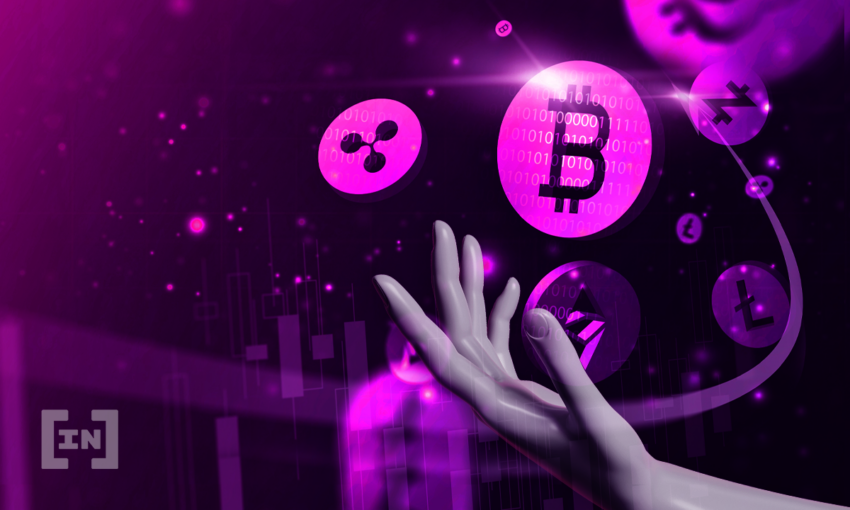
MANA’s ICO took place in 2017, and it raised $26 million. During the ICO, one MANA token was valued at $0.0240.
MANA token allocation:
- Crowdsale (ICO): 40%
- Decentraland foundation: 20%
- Team and early contributors: 20%
- Community and partners: 20%
Originally, the total supply of MANA tokens was set at 2.8 billion, but it gets reduced each time LAND transactions take place. During the first round of LAND auctions, 600 million MANA were burned. To further reduce the circulating token supply, 2.5% is burnt from the MANA transactions happening on the Decentraland marketplace.
MANA can be traded on most exchanges, including centralized exchanges (Binance, Coinbase, KuCoin, Kraken, Gemini, and others)and decentralized exchanges such as Uniswap and SushiSwap.
As of November 2022, MANA trades at around $0.4673 per token, the total supply stands at around 2.193 billion MANA, and there is a circulating supply of 1.86 billion MANA. The token’s all-time high was reached on Nov. 25, 2021, when it peaked at $5.90 per MANA.
Should you buy MANA?
Available on:
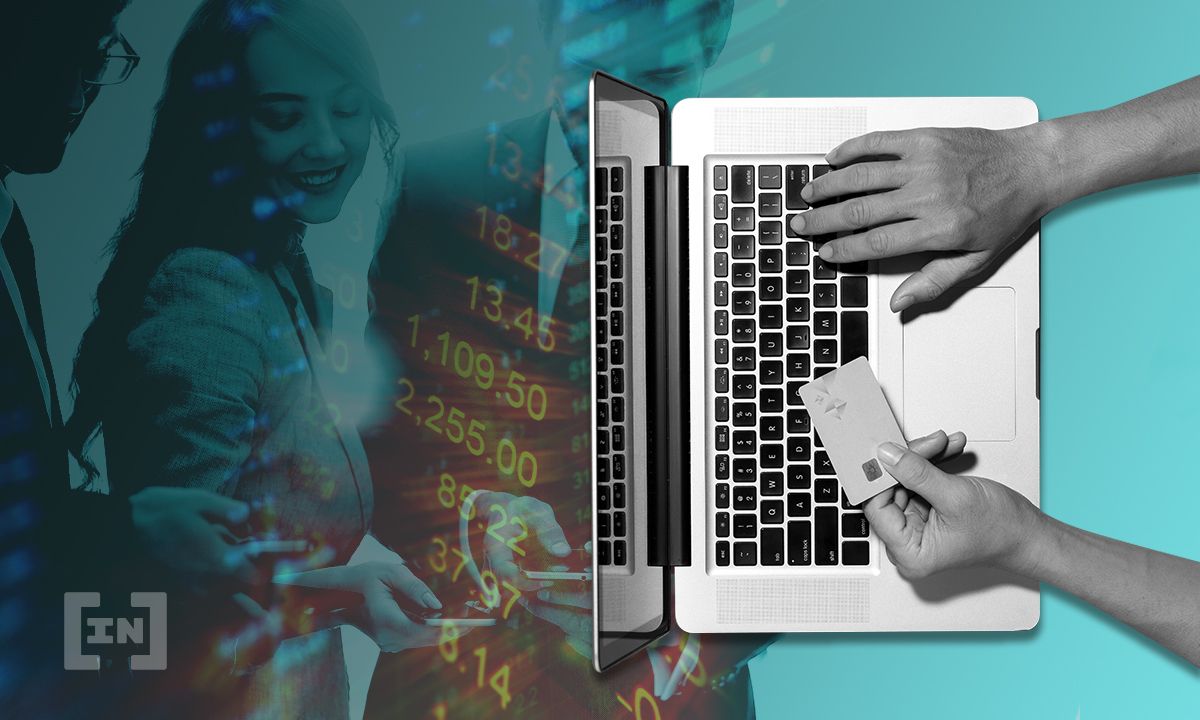
Decentraland MANA is a top-ranked cryptocurrency, and it supports the core features of the Decentraland platform. Plus, it is an integral part of the Decentraland definition. You simply cannot explore the Decentraland meaning to its fullest without discussing this token.The token is in demand since its launch. However, there was a popularity explosion in 2021, with several companies announcing their interest in building a metaverse, including Facebook rebranding to Meta.
Since reaching its all-time high in Nov. 2021, the value of MANA has slowly declined over time. Still, it remains one of the best investment options for anyone interested in generating revenue from the metaverse development and supporting the ecosystem.
Note: None of this is financial advice!
How to buy MANA?
Investors can buy MANA using centralized exchanges:
Here, we will use Binance to buy MANA tokens.
Step 1. Choose a cryptocurrency exchange
Before buying MANA tokens, find a crypto exchange available in your country that lists MANA. You can find the list of all available markets on CoinMarketCap.
We will use Binance to buy MANA tokens. You can also use Coinbase.
Step 2. Create an account
If this is your first time buying cryptocurrency, you will need to create an account.
Setting up an account on Binance is easy and only requires a few clicks. Click on Register and enter the information.
Step 3. Verify your account
Before you can purchase cryptocurrency with your credit or debit card, you will need to verify your identity. This is the case with most centralized crypto exchanges.
You will have to provide your ID, tax information, and address proof to get verified.
Step 4. Buy MANA token
After your account gets verified, go to Buy Crypto and select Credit/Debit Card. You can select your fiat currency and the desired crypto. In this case, we will choose to buy MANA directly.
After entering the details, click Continue. You must first activate Fiat Service, allowing Binance to access your private information.
Once you activate the fiat service, you will see all the details of your transaction. You can also input the details of your credit or debit card here if you haven’t already.
Click on Continue when you’re ready.
Here you will see the exact price per MANA token, the transaction fees, and the total amount you will pay. If you’re happy with all the details, click on Confirm and finalize the transaction. You will also receive an email confirmation of your purchase.
How to stake MANA
MANA is an ERC-20 token native to the Ethereum blockchain, a proof-of-work network. Technically, users cannot stake MANA. However, some popular lending platforms allow you to lend MANA and make significant APY from your tokens.
If you bought MANA using Binance, the easiest way to “stake” MANA is to deposit it to Binance Earn. This step-by-step guide will show you how to stake MANA on Binance Earn.
There are many other options available, including the Celsius app, Crypto.com and Gemini Earn.
Step 1. Go to Binance Earn
Go to Earn > Binance Earn and search for MANA.
On Binance, you can deposit MANA tokens under Binance Earn as flexible savings. As of 2022, the estimated APY is 0.50%. The minimum deposit is 0.01 MANA.
Step 2. Click on Subscribe and select the amount of MANA to deposit.
Step 3. Click on Confirm when you’re ready.
After you confirm the deposit, you will get a notification about the successful deposit.
Is Decentraland the future of metaverse?
As a decentralized virtual reality platform that allows you to purchase virtual land parcels, Decentraland lets you tap into the creativity of entrepreneurs and gamers all over the world to make the most of the land you buy. And we did discuss all of that as part of the Decentraland definition.
This project is unique in a market that’s still in its infancy. While the popularity of alternative life games is encouraging, it’s difficult to predict if this trend will continue into 3D and blockchain. If Decentraland achieves worldwide acceptance, we might see a whole new ecosystem of businesses and experiences emerge before our eyes.
Go on and try it for yourself. Test those peer-to-peer connections and make friends in the metaverse. Be the owner of virtual real estate. That’s the only way to tell if this technology has a future. If a lot of people like it, then it does. And once you have tried out everything associated with this metaverse , revisit the all-important question once more: what is Decentraland! You will surely have the most accurate Decentraland meaning by then.
< Previous In Series | Decentralized | Next In Series >
Frequently asked questions
What is Decentraland and how does it work?
Is Decentraland a good investment?
What can you do in Decentraland?
Can you make money on Decentraland?
Disclaimer
In line with the Trust Project guidelines, the educational content on this website is offered in good faith and for general information purposes only. BeInCrypto prioritizes providing high-quality information, taking the time to research and create informative content for readers. While partners may reward the company with commissions for placements in articles, these commissions do not influence the unbiased, honest, and helpful content creation process. Any action taken by the reader based on this information is strictly at their own risk. Please note that our Terms and Conditions, Privacy Policy, and Disclaimers have been updated.


